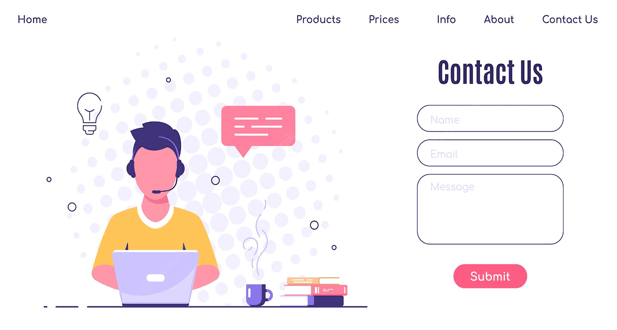About Assign leads based on scoring
Lead scoring is the practice of giving a lead (or sales opportunity) a value (or score) in order to ascertain the chances of a successful conversion and the anticipated transaction’s projected worth. The notion takes into account the lead’s actions before getting in touch with the selling organization, such as brand engagement and website visits.
Estimated transaction value and lead attributes like geography, spending limit, timeframe, and general need are also taken into account. The likelihood that a lead will make a significant purchase soon increases with a lead score, and contact management duties related to that lead are given more importance.
After the ratings have been calculated, leads may have sufficient knowledge to identify which sales team they belong to. Using the same domain technique, leads may be given to particular teams.
You may use Leads Scoring to rate your leads based on predetermined criteria. To assess the efficacy of your leads, marketing and sales teams frequently utilize lead scoring. This number indicates how probable a certain prospect is to purchase your goods or services. On a scale of 0 to 100 points, it indicates how interested a lead is in your goods or services.
Different types of lead scoring models
- Lead scoring based on Demographics – Parents of infants and small children are their ideal customers since users may offer newborn baby care goods to them.
In this situation, the User can gather demographic data about your leads and assign them points according to how well they meet your target market. Alternatively, you might deduct points from potential customers who do not fit your target market.
This will enable you to find leads that are highly likely to convert and merit your investment.
- Lead Scoring based on website visitors’ activities – To identify sales leads from site visitors, you may also develop a lead scoring model. The evaluation will be based on how they use your website.
- Lead Scoring Based on email engagement – Running email marketing is another popular strategy for generating leads. Using measures like open rate, click-through rate, and the number of downloads, you can quickly assess the efficacy and conversion possibilities of your prospects (if you had shared any downloadable resource).
Benefits of lead Scoring
- Increased sales operations efficiency – Increasing the effectiveness of corporate operations is the primary motivation for the implementation of a lead-scoring method. The process of prioritizing contact management chores is automated to achieve this. Sales representatives may benefit from lead scoring by having a better knowledge of which leads require quick action and which ones can wait. The average time it took B2B enterprises to get in touch with leads was 42 hours, according to a lead response survey of 2,241 US organizations. It’s interesting that the same study discovered that the seller that responded first receives up to 50% of purchases. With these kinds of insights, your salesforce may spend more time acting than deciding what to do next.
- Increased marketing campaign ROI – The majority of businesses need to successfully utilize lead scoring systems. In actuality, just 27% of leads sent straight to sales by B2B marketers are indeed deemed qualified. This indicates that most sales teams are not putting enough effort into the qualified leads that are ready to buy and instead are spending their time on unqualified leads that are unlikely to result in a sale. Lead generation campaigns may be tailored to target those precise ideal customer profiles in very specific channels if marketing learns the kind of leads that salespeople desire to engage with. More qualified leads will be generated as a consequence, and less effort will be spent on marketing and sales. Marketers may modify their existing marketing strategy to produce more high-quality leads by studying data on lead scoring.
- Increased Company Revenue – It is a proven truth that by installing a lead scoring system, your company will enjoy an increase in lead creation in addition to increased productivity and effectiveness. Our case studies demonstrate how LeadAssign clients accomplish impressive outcomes by utilizing powerful marketing and sales techniques.
How to Create a lead scoring system
- Create Ideal buyer personas – The first step is to identify your target market by creating ideal customer personas. A buyer persona is a fictionalized portrayal of your ideal client that is built on information from actual customers, internal sales insights, and external industry research. Buyer personas may come in a variety of forms, and each one offers a unique perspective that should be taken into account when creating a lead scoring system. For instance, while deciding who to sell to, a manufacturing business could concentrate most of its efforts on the target market that has the greatest purchasing power, even when there are other possible customers who might not all fall into that defined profile. Outside of the ideal buyer persona, the possibility of conversion is reduced, hence efforts in this area shouldn’t be as concentrated.
- Determine significant data points – The ambiguity will be removed and the basis for the lead scoring system will be established by identifying which characteristics are essential enough to award point values. Two categories will typically make up the lead score criteria. Information on a lead’s demographics, or the traits they have. Behavioral data, or the activities a lead does or their interactions with your business.
Demographic Information
- Location
- Job title
- Seniority
- Department
- Industry
- Company size and revenue
- Salesforce network
Behavioral Information
- Whether a customer has viewed or subscribed to a newsletter
- How many times they have accessed the price page on your company’s website
- Whether they have registered for webinars or requested free trials
- How many times they’ve visited a website or submitted form data
- Whether or whether they have downloaded documents like whitepapers
- If they have participated in your company’s content marketing and social media
- Assign Appropriate Values – Different lead score factors have different values. The weight of a scale will be assigned to the criterion. A buyer who downloads a whitepaper, for instance, would be seen as a higher-value lead than someone who signs up for a newsletter. Values will vary depending on the kind of leads a firm is looking for in the industry they operate in. It will be evident from historical customer analysis what actions and behaviors promote (or do not support) successful conversions. Here, real input from the current clientele and sales network will be helpful. Conducting industry research is a good activity to make sure you’re placing the right weight on both demographic and behavioral information if consumer data is ambiguous or unavailable. The process of assigning values to lead attributes is iterative. To improve the sales funnel, these presumptions must be regularly tested in light of changing market trends and consumer behavior.
- Create Lead management infrastructure – Two prominent tools for creating a lead funnel architecture are spreadsheets and CRM software. However, it appears onerous to go through each prospective lead that was created by even a tiny engagement with your product. For additional details on Lead Management, go here.
Lead Scoring Program
The process of determining if a lead is sales-ready is known as lead scoring. You choose the elements or pieces of data that signify a sales-qualified lead, and you assign points to each of those elements to produce a lead’s overall score. You can eliminate subjectivity from the process and determine which leads have the highest likelihood of converting by using a lead score system. This raises the question of why a lead scoring system wouldn’t be implemented if the lead conversion was a priority and marketing leads weren’t converting. Next, we respond to this query.
Advantages of Lead Scoring
- More Effective Marketing Campaigns – You can determine the campaigns and distribution channels that provide high-quality leads by using lead scoring. After that, you may modify your marketing plan to produce more qualified leads.
- Sales and Marketing Alignment – The main cause of the mismatch between sales and marketing is the lack of a sound lead scoring system. Every lead you send to sales will be qualified if your company has a clear set of rules in place for scoring leads. This will improve the interaction between the two departments and allow for greater sales and marketing alignment.
Increase in Revenue – The sales department may prioritize which leads to follow up with first thanks to lead scoring. Revenue is strongly impacted by timely outreach to eligible leads. Even though they are significant, these three advantages are only the proverbial tip of the iceberg. Numerous organizational procedures may be streamlined, made simpler, and improved by lead scoring. The best thing is that Implementing the system is not challenging.
Frequently Asked Questions
While lead grading centers on the possible interest from the corporate side, lead scoring concentrates on the interest from the perspective of the client.
To ensure that only the most qualified leads are forwarded from marketing to sales, lead scoring and lead grading work very well together. In addition to Marketing Cloud Account Engagement, our marketing automation product, Salesforce also provides adaptable, automated lead scoring and grading options.
Your sales efforts should be focused on real customers who are prepared to buy. Since lead scoring identifies which prospects are likely to convert, it helps you avoid wasting marketing and sales resources on leads that are unlikely to convert.




